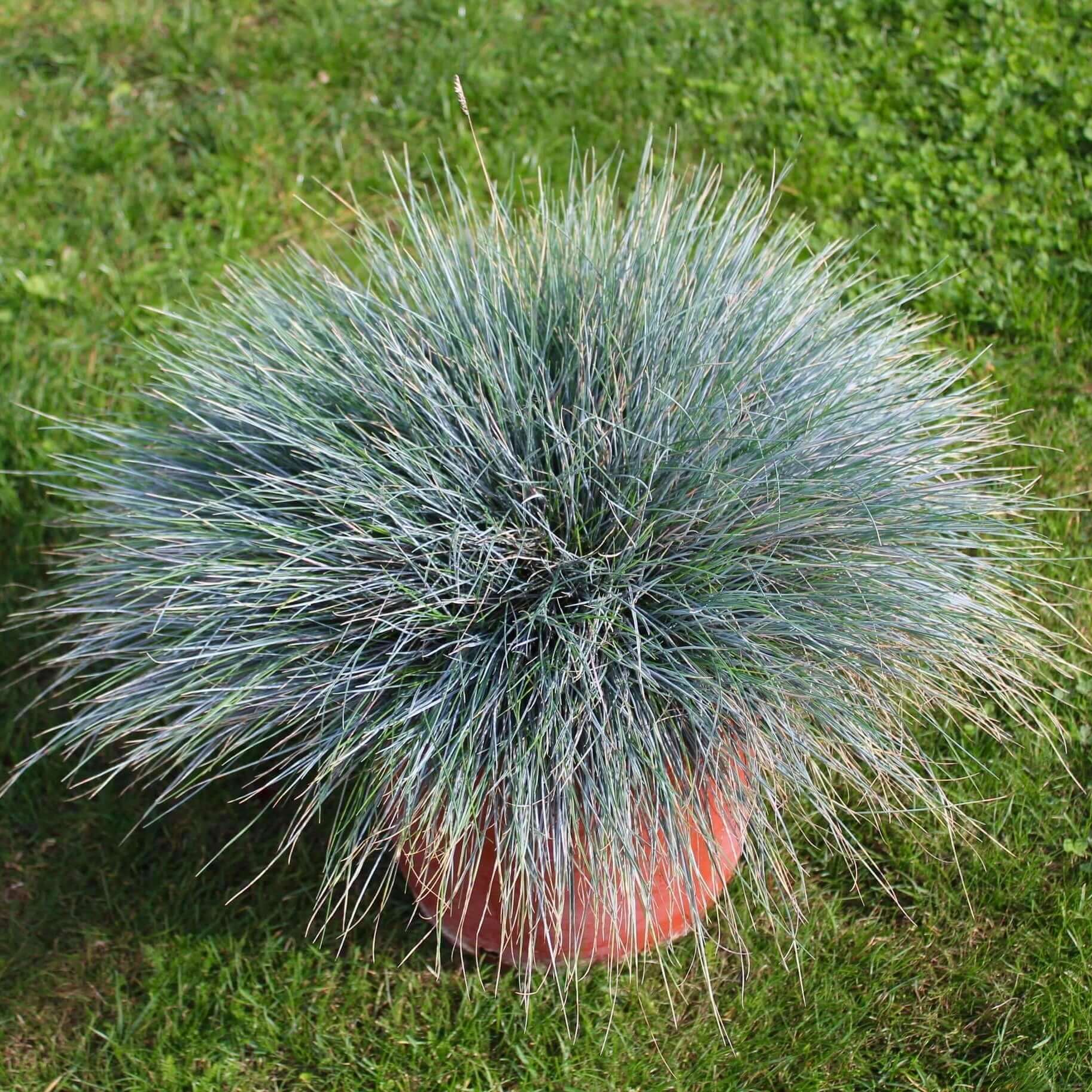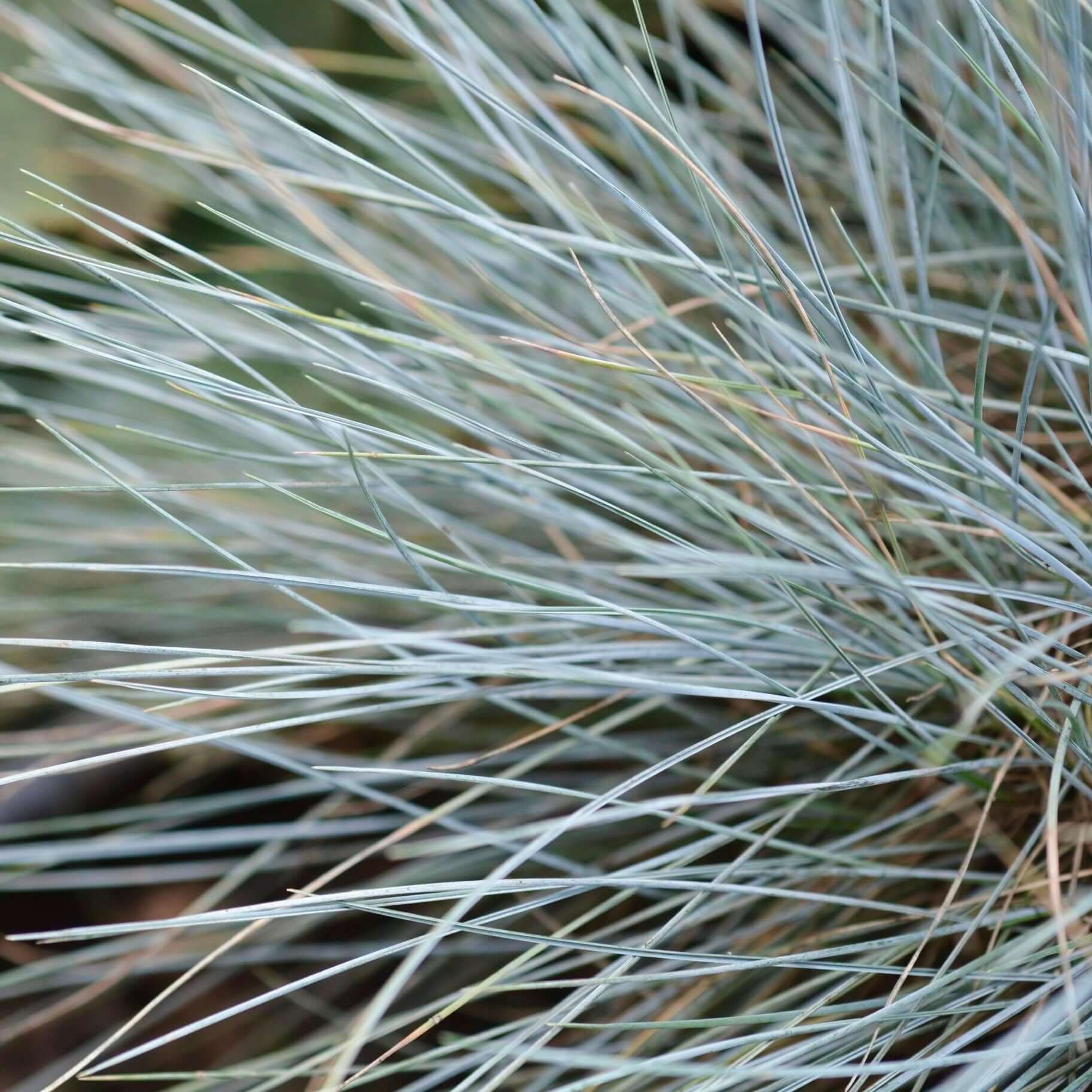
Elijah Blue Fescue
Festuca glauca 'Elijah Blue' (F. cinerea)
Delivery
24-hour money-back guarantee
Free delivery on orders over $349
Big Project? Call 888-444-1126 for bulk rates!
Festuca glauca 'Elijah Blue' is a finely textured, clumping grass that cools off any garden with its frosty blue blades. This radiant blue, small, ornamental grass adds color and texture in the landscape.
Elijah Blue Fescue is a drought-tolerant grass for coastal gardens. This cool-season, evergreen, ornamental grass forms neat mounds that are less than 12 inches tall and wide. It can be utilized to create geometric patterns in the landscape or serve as colorful accents in borders, near dry streambeds, or alongside boulders. The slender, blue linear leaves beautifully contrast with broad, dark green, or dark burgundy foliage. Additionally, it can be combined with other silvery-blue plants to create a monochromatic garden or add textural interest to a patio container.
In the spring, silvery flower stalks, measuring 12 to 18 inches in height, emerge and rapidly develop into straw-colored stems. These flower stalks are not particularly showy and may detract from the color and symmetry of Elijah Blue Fescue. However, depending on your garden style, you may still find the fescue flowers appealing.
Festuca ‘Elijah Blue’ is one of the most popular blue fescues and is a fantastic choice for anyone interested in adding beauty, symmetry, color, and texture to their garden.
How tall and wide does Elijah Blue Fescue grow?
When does Elijah Blue Fescue bloom?
What kind of sunlight and soil does it prefer?
How much water does it need?
12 in. or less
8-12 in.
Low
Perfect Your Landscape With Expert Help
Customize your yard with confidence. Schedule your free consultation today and bring your outdoor space to life!


